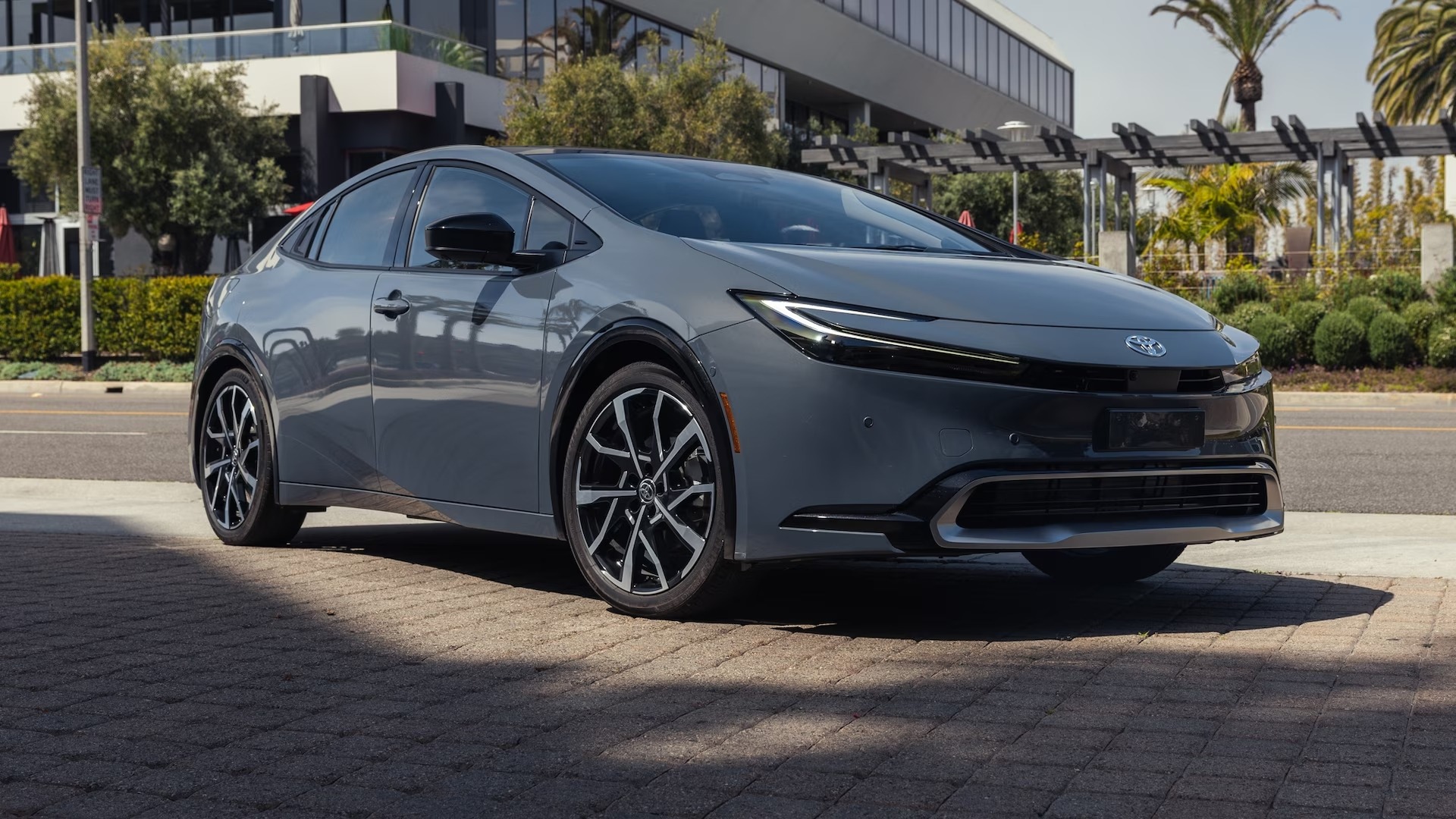Toyota has long been synonymous with reliability, but the modern automotive world has introduced new challenges that even this Japanese giant struggles to go perfectly.
While Toyota’s mechanical prowess remains largely intact, the integration of complex infotainment systems, digital displays, and sophisticated electronics has created a two-tiered reality within their lineup.
Some models continue to exemplify the brand’s legendary dependability, maintaining their technological systems with minimal issues, while others have become notorious for frustrating freezes, glitches, and electronic malfunctions that leave drivers stranded with blank screens and unresponsive controls.
Recent years have seen Toyota’s reputation for reliability challenged by a string of high-profile recalls and failures, particularly affecting their newer technology-heavy models.
Consumer Reports’ surveys now address 20 possible pain points experienced by owners, ranging from transmission issues to climate controls and in-car electronics such as touchscreen interfaces and infotainment systems, highlighting how technology has become a critical factor in modern vehicle reliability assessments.
The divide between Toyota’s most reliable and most problematic models often comes down to complexity versus simplicity.
Models that have retained straightforward, proven technology tend to perform exceptionally well, while those pushing the envelope with cutting-edge features sometimes struggle with software bugs, system crashes, and integration issues.
Understanding this divide is crucial for consumers who want Toyota’s legendary reliability without the headaches that can come with bleeding-edge automotive technology.
This comprehensive analysis examines ten Toyota models, revealing which ones you can trust to start up without technical drama and which ones might leave you staring at a frozen screen when you need them most.
5 Toyotas That Rarely Need Tech Fixes
These dependable vehicles feature stable infotainment systems, proven electronic architectures, and conservative technology implementation that delivers years of trouble-free operation without software crashes, system freezes, or electronic malfunctions that plague more complex alternatives.
Their robust computing platforms incorporate reliable processors, adequate memory allocation, and well-tested software that resists corruption and maintains consistent performance across temperature extremes and electrical variations common in automotive environments.
The combination of proven hardware components, conservative software updates, and extensive validation testing creates ownership experiences that focus on transportation rather than technology troubleshooting.
From reliable sedans with straightforward systems to proven SUVs with mature electronics, these vehicles demonstrate Toyota’s traditional approach to automotive technology through patient development and thorough testing that prioritizes reliability over cutting-edge features, delivering dependable electronic functionality that maintains operation throughout extended ownership periods without requiring software updates or system resets.
1. Toyota Camry (2018-2024)
The Toyota Camry stands as a testament to the perfect balance between modern technology and proven reliability. This midsize sedan has consistently demonstrated exceptional technological stability across multiple model years, earning praise from owners who report minimal infotainment issues and robust system performance.
The Camry’s Entune 3.0 Audio system, while not the most cutting-edge, provides reliable smartphone integration through Apple CarPlay and Android Auto without the frequent freezing issues that plague other models.
What sets the Camry apart is Toyota’s conservative approach to implementing technology in this mainstream sedan.
Rather than rushing to include every possible feature, Toyota has focused on ensuring that existing systems work flawlessly. The 8-inch touchscreen display rarely experiences the black screen issues that affect other Toyota models, and the system’s response time remains consistent even after years of use.
Climate control integration works seamlessly, and drivers report that voice commands function reliably without requiring multiple attempts or system resets.

The Camry’s technological reliability extends beyond the infotainment system to include its digital instrument cluster and safety technology integration.
Toyota Safety Sense 2.0 operates without glitches, providing consistent performance from features like adaptive cruise control and lane departure warning systems.
The backup camera displays clearly without lag, and the blind spot monitoring system maintains accurate detection without false alarms or system failures.
Long-term owners particularly appreciate the Camry’s software stability. Unlike models that require frequent dealer visits for software updates to address freezing issues, the Camry’s systems maintain their performance over time.
The few reported issues typically involve minor software glitches that resolve themselves with a simple restart, rather than persistent freezing that requires professional intervention.
This reliability has made the Camry a favorite among drivers who depend on their vehicles for daily commuting and business use, where technological failures can cause significant disruption.
The sedan’s reputation for technological reliability has been reinforced by professional automotive reviews and consumer feedback, with many noting that the Camry’s infotainment system continues to function properly even as the vehicle approaches high mileage markers.
This consistent performance has helped maintain Toyota’s reputation in the competitive midsize sedan market, where technological reliability has become just as important as mechanical dependability.
2. Toyota Prius (2016-2023)
The Toyota Prius represents one of Toyota’s most technologically mature platforms, benefiting from years of hybrid system refinement and software optimization.
Despite being packed with complex hybrid technology and multiple digital displays, the Prius has achieved remarkable stability in its electronic systems.
The model’s technological reliability stems from Toyota’s extensive experience with hybrid technology, allowing them to create robust software that rarely requires intervention or updates to maintain proper function.
The Prius’s infotainment system, while featuring a unique interface design that some find challenging to go, operates with exceptional consistency.
Screen freezing issues are notably rare compared to other Toyota models, and the system maintains responsive performance throughout the vehicle’s lifespan.
The integration between the hybrid system display and the infotainment unit works seamlessly, providing real-time energy flow information without glitches or display errors that could confuse drivers about their vehicle’s operating status.
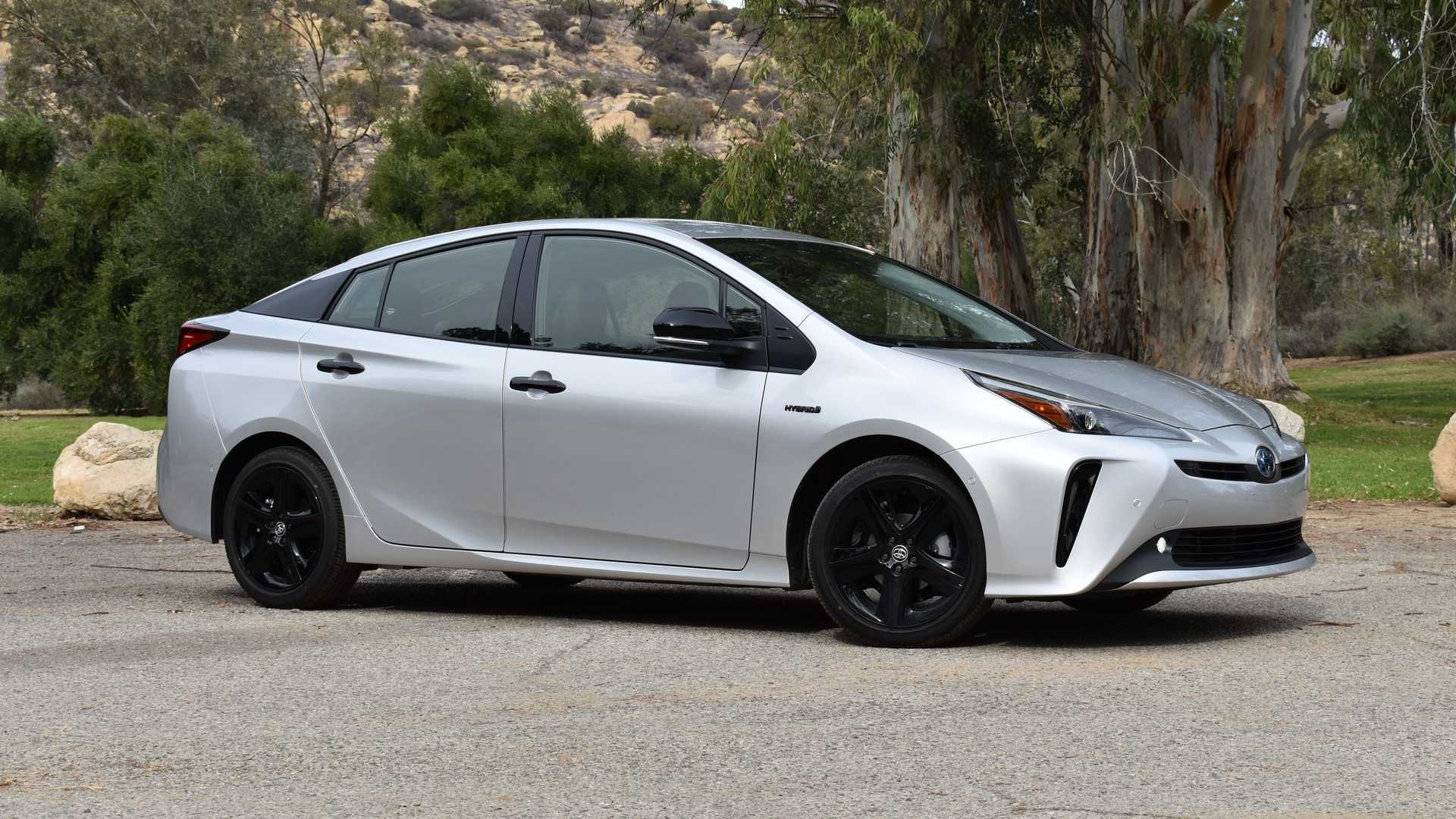
Perhaps most impressive is the Prius’s ability to manage multiple technological systems simultaneously without conflicts.
The vehicle’s computer must coordinate between the gasoline engine, electric motors, battery management system, regenerative braking, and various efficiency displays, yet does so with remarkable stability.
Owners report that error messages related to technological malfunctions are extremely rare, and when they do occur, they typically indicate actual mechanical issues rather than false alarms caused by software bugs.
The model’s technological reliability extends to its advanced features, including the heads-up display available in higher trim levels and the comprehensive energy monitoring system.
These features continue to function accurately over time, providing consistent information without the calibration issues or display problems that affect other hybrid vehicles.
The backup camera and parking assist systems maintain their accuracy, and the climate control system’s integration with the hybrid powertrain operates without the confusion that sometimes affects other eco-friendly vehicles.
Toyota’s commitment to software quality in the Prius is evident in the minimal number of technical service bulletins related to infotainment or electronic system problems.
This reliability has contributed to the Prius maintaining strong resale values, as used car buyers recognize that they’re unlikely to inherit expensive electronic problems.
The model’s reputation for technological dependability has made it particularly popular among environmentally conscious drivers who don’t want to sacrifice reliability for fuel efficiency.
3. Toyota Sienna (2021-2024)
The redesigned Toyota Sienna has surprised many with its technological reliability, particularly considering the complexity of managing hybrid powertrain integration alongside family-focused infotainment features.
Despite being packed with features designed to keep passengers entertained and connected, the Sienna’s systems demonstrate exceptional stability and rarely require professional intervention to resolve electronic issues.
The Sienna’s 9-inch touchscreen infotainment system has proven remarkably stable across various operating conditions.
Families report that even with multiple devices connected simultaneously for different passengers, the system maintains consistent performance without the freezing or slowdown issues that might be expected from such heavy usage.
The wireless charging pad functions reliably, and the multiple USB ports maintain consistent power delivery and data connectivity without the intermittent connection problems that plague some modern vehicles.
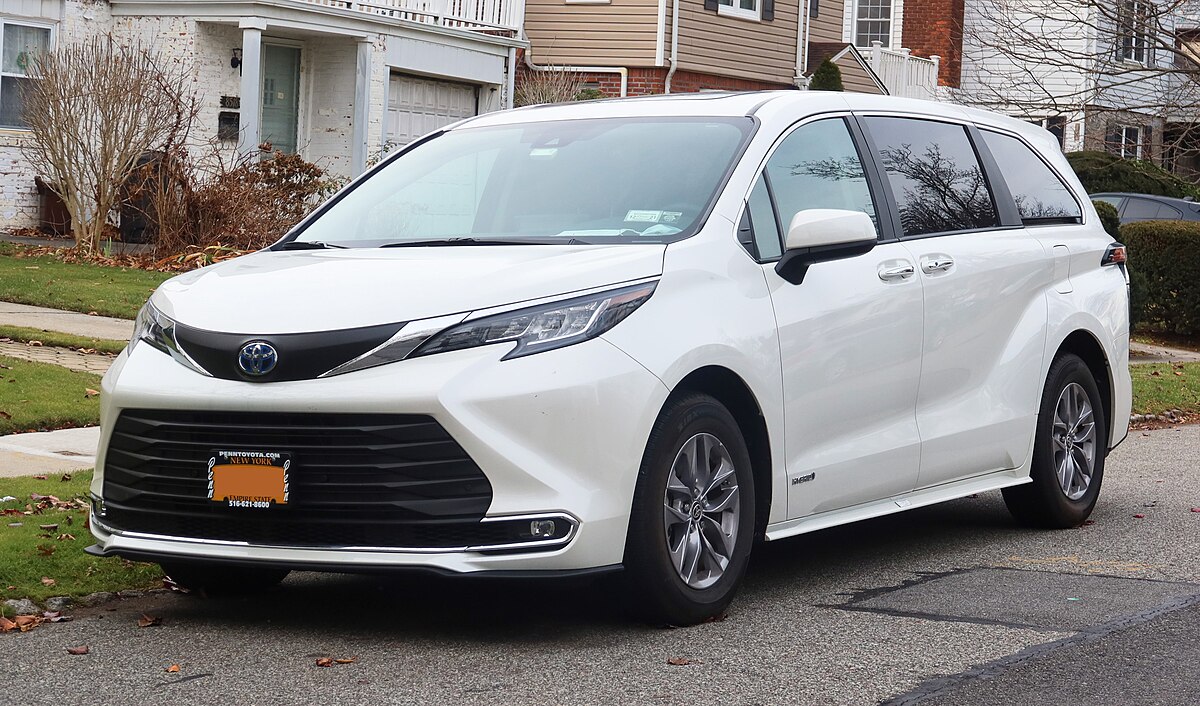
What makes the Sienna particularly impressive is its management of rear-seat entertainment features. The available rear-seat entertainment system, including individual screens and wireless headphone connectivity, operates without the technical difficulties that often affect similar systems in other vehicles.
Parents report that the system boots up quickly and maintains stable connections, crucial for keeping children entertained during long trips without requiring roadside troubleshooting sessions.
The hybrid system integration in the Sienna demonstrates Toyota’s technological maturity. The vehicle seamlessly switches between electric and gasoline power without display glitches or system confusion that sometimes affects other hybrid vehicles.
The energy flow displays remain accurate and responsive, and the vehicle’s various driving modes activate without electronic hesitation or error messages.
This reliability is particularly important in a family vehicle where parents need to focus on passenger management rather than troubleshooting technological issues.
Advanced safety features in the Sienna, including the comprehensive Toyota Safety Sense 2.0 suite, operate with exceptional consistency. The blind spot monitoring system accurately tracks vehicles in adjacent lanes without false alerts, and the backup camera provides clear, reliable visibility even in challenging lighting conditions.
These features maintain their calibration over time, reducing the need for dealer visits to recalibrate or update system software, a common requirement in other technology-heavy vehicles.
4. Toyota Avalon (2019-2022)
The Toyota Avalon, before its discontinuation, represented the pinnacle of Toyota’s approach to reliable luxury technology. This full-size sedan successfully integrated premium features with the brand’s commitment to dependability, creating a vehicle where advanced technology rarely creates problems for owners.
The Avalon’s sophisticated infotainment system, premium audio integration, and comprehensive connectivity features operated with exceptional stability throughout the model’s production run.
The Avalon’s Entune 3.0 Premium Audio system demonstrated how Toyota could successfully implement high-end features without sacrificing reliability.
The 9-inch touchscreen remained responsive even after years of use, and the integration with premium audio systems like JBL provided consistent sound quality without the audio dropouts or connection problems that affect some premium vehicles.
Navigation functionality worked reliably, maintaining accurate GPS positioning and providing timely route updates without the freezing issues that necessitate system resets in other models.
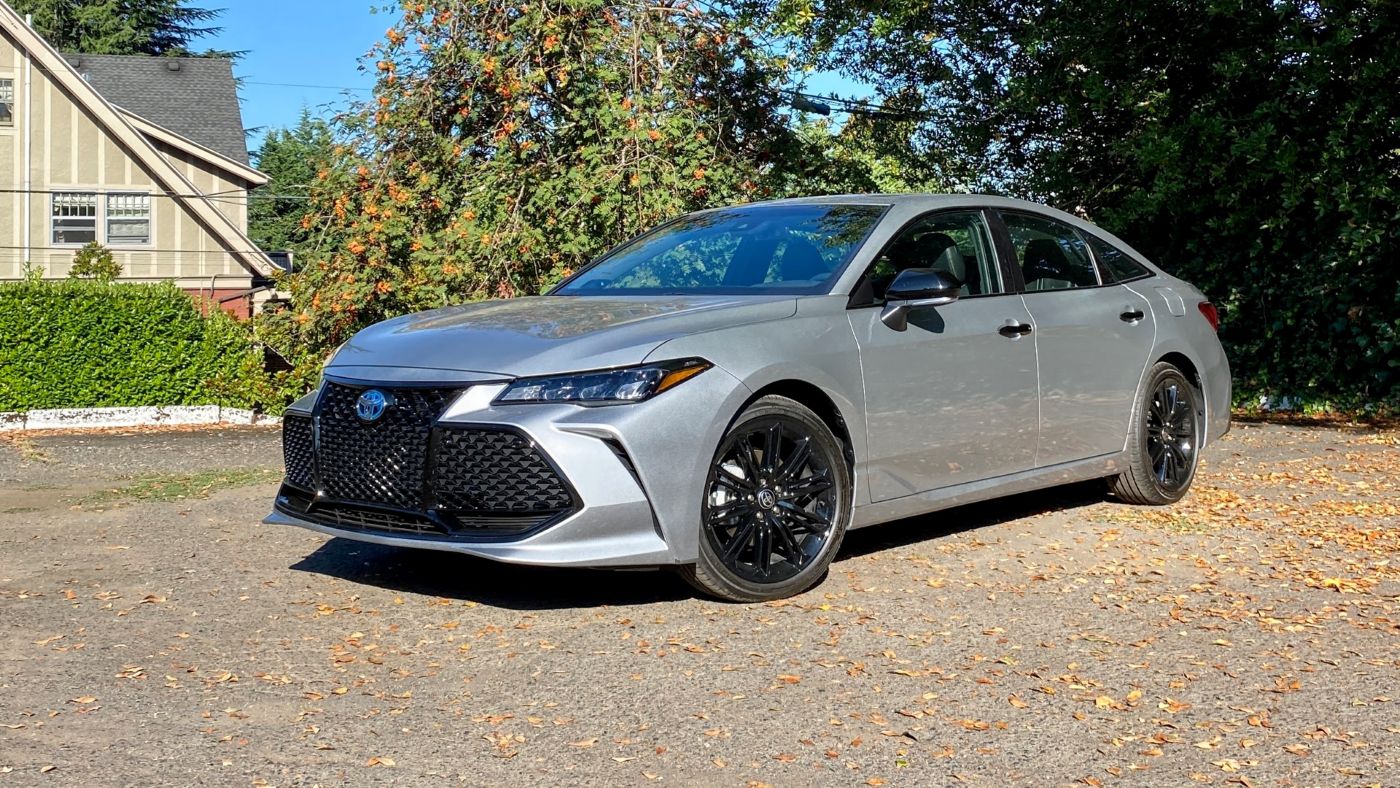
Advanced comfort features in the Avalon, including heated and ventilated seats, dual-zone climate control, and ambient lighting systems, functioned consistently without the electronic glitches that can affect luxury vehicle amenities.
The seat memory settings retained their positions accurately, and the climate control system responded promptly to adjustments without the delayed responses or system conflicts that sometimes occur when multiple electronic systems interact.
The vehicle’s technological reliability extended to its premium safety features, including adaptive cruise control with full-speed range and steering assist functionality.
These systems maintained accurate performance without requiring frequent recalibration or dealer updates. The lane-keeping assist functioned smoothly without the abrupt corrections or false activations that can make such systems more hindrance than help.
Owners appreciated that these advanced features worked as intended without requiring them to become technology experts to troubleshoot problems.
Perhaps most significantly, the Avalon demonstrated that complexity doesn’t necessarily compromise reliability when properly engineered. Despite featuring some of Toyota’s most advanced technology, including wireless device charging, premium connectivity features, and sophisticated driver assistance systems, the vehicle maintained exceptional electronic reliability.
This success proved that Toyota could compete in the luxury technology space while preserving the dependability that defines the brand, making the Avalon’s discontinuation particularly disappointing for drivers seeking reliable luxury technology.
Also Read: 5 Obscure Japanese Cars That Don’t Fail vs 5 European Icons Prone to Breakdowns
5. Toyota Highlander (2020-2024)
The Toyota Highlander has established itself as a remarkably reliable three-row SUV in terms of technological performance, successfully managing the complex integration of family-oriented features with robust system stability.
This midsize SUV’s technology works consistently across various operating conditions, from daily school runs to extended family road trips, without the electronic failures that can strand families far from home.
The Highlander’s infotainment system demonstrates impressive stability despite managing multiple user profiles, device connections, and entertainment options simultaneously.
Families report that the system handles the technological demands of modern family life without freezing or requiring system resets.
The 8-inch touchscreen remains responsive even when managing navigation, music streaming, and hands-free calling simultaneously, a crucial capability for busy families who rely on seamless connectivity.
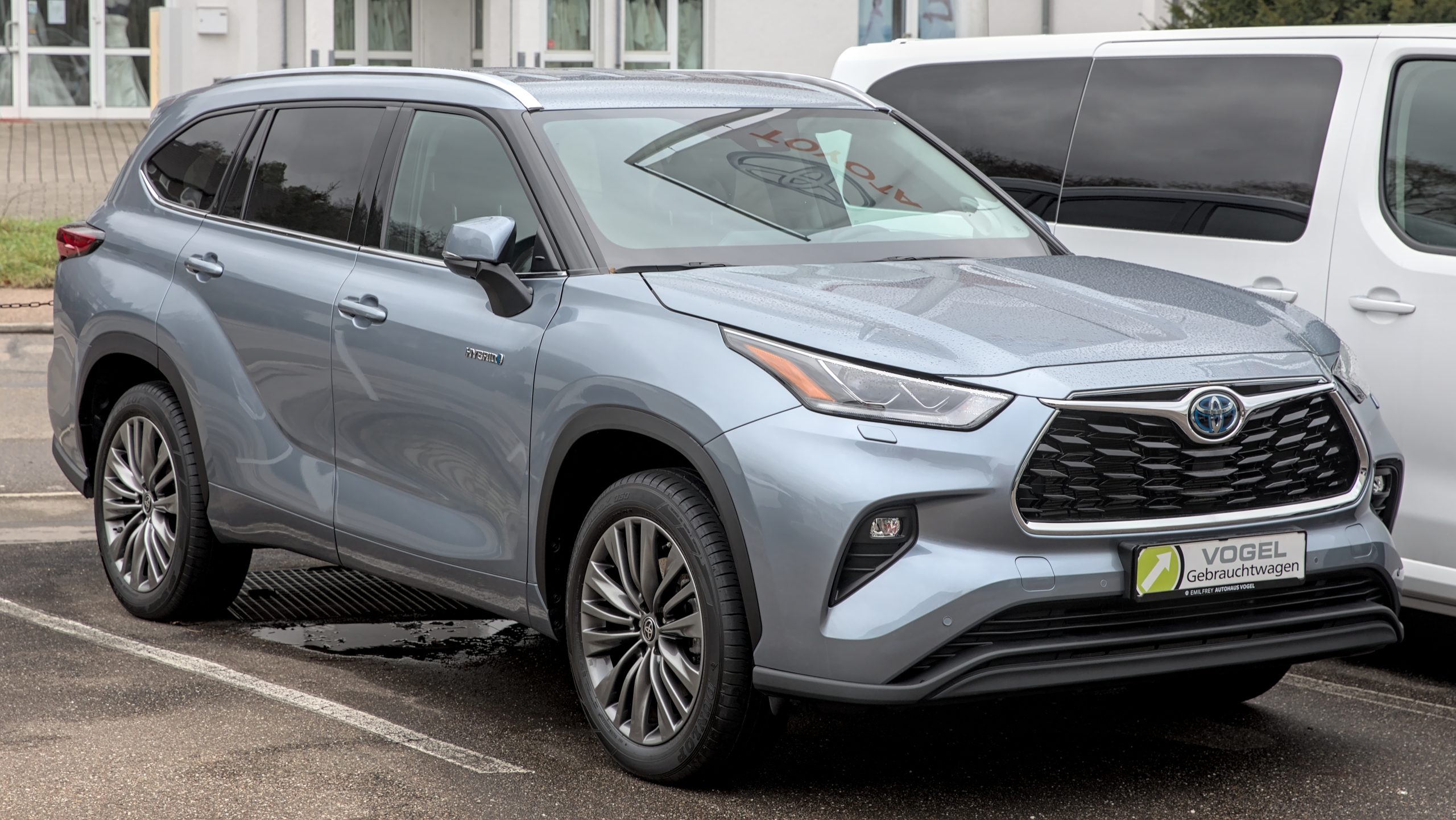
Climate control integration in the Highlander works exceptionally well, with the three-zone automatic climate control system responding accurately to adjustments without conflicts between zones or system delays.
This reliability is particularly important in a family vehicle where passenger comfort directly affects driving concentration and trip satisfaction.
The seat heating and ventilation systems maintain consistent operation without the intermittent failures that can affect comfort features in other vehicles.
The Highlander’s safety technology integration represents one of Toyota’s most successful implementations of comprehensive driver assistance features.
Toyota Safety Sense 2.0 operates reliably across all driving conditions, with adaptive cruise control maintaining accurate following distances and lane departure warning systems providing consistent alerts without false activations.
The blind spot monitoring system accurately tracks vehicles in adjacent lanes, and the rear cross-traffic alert functions reliably in parking lot situations where family vehicles face particular challenges.
Advanced convenience features like the hands-free power liftgate and available wireless device charging operate consistently without the technical issues that can make such features more frustrating than helpful.
The vehicle’s multiple USB ports maintain reliable connections for passenger devices, crucial for keeping children entertained during long trips.
The backup camera provides clear, consistent visibility, and the available bird’s-eye view parking camera system maintains accurate calibration over time, reducing the need for dealer visits to address technical problems that commonly affect such sophisticated systems.
5 Toyotas That Constantly Freeze Up
These problematic vehicles frustrate owners with recurring infotainment crashes, system freezes, and electronic malfunctions that contradict Toyota’s reliability reputation through unstable software and inadequate hardware that requires frequent resets and dealer intervention.
Their complex systems incorporate underpowered processors, insufficient memory capacity, and buggy software that generates endless technology headaches despite Toyota positioning that suggests superior quality and dependability over mainstream competitors.
The combination of rushed technology implementation, inadequate testing, and problematic updates creates ownership disasters as buyers discover that Toyota’s reliability reputation cannot prevent fundamental electronic design flaws that prioritize feature complexity over basic system stability.
From models with known infotainment issues to vehicles with problematic connectivity systems, these cars prove that even Toyota’s engineering excellence can fail when technology development is rushed, transforming reliable transportation into frustrating electronic nightmares requiring constant system resets and software updates that never fully resolve underlying stability problems.
1. Toyota Tundra (2022-2024)
The redesigned Toyota Tundra has unfortunately become synonymous with technological frustration, representing one of the most problematic implementations of modern infotainment technology in Toyota’s current lineup.
Toyota had to replace engines in over 100,000 Tundra pickups due to manufacturing issues, but the technological problems extend far beyond mechanical concerns.
The truck’s 14-inch touchscreen, while impressive in size, has proven remarkably unreliable, frequently freezing during startup and requiring multiple restart cycles to achieve basic functionality.
Owners report that infotainment screens freeze about two minutes after boot-up, sometimes during the boot process itself, leaving drivers with either black screens or stuck Toyota logos.
This issue affects fundamental vehicle functions, including climate control, radio operation, and backup camera display, making these technological failures more than mere inconveniences.
The integration between the large touchscreen and essential vehicle systems means that when the display fails, drivers lose access to critical comfort and safety features.
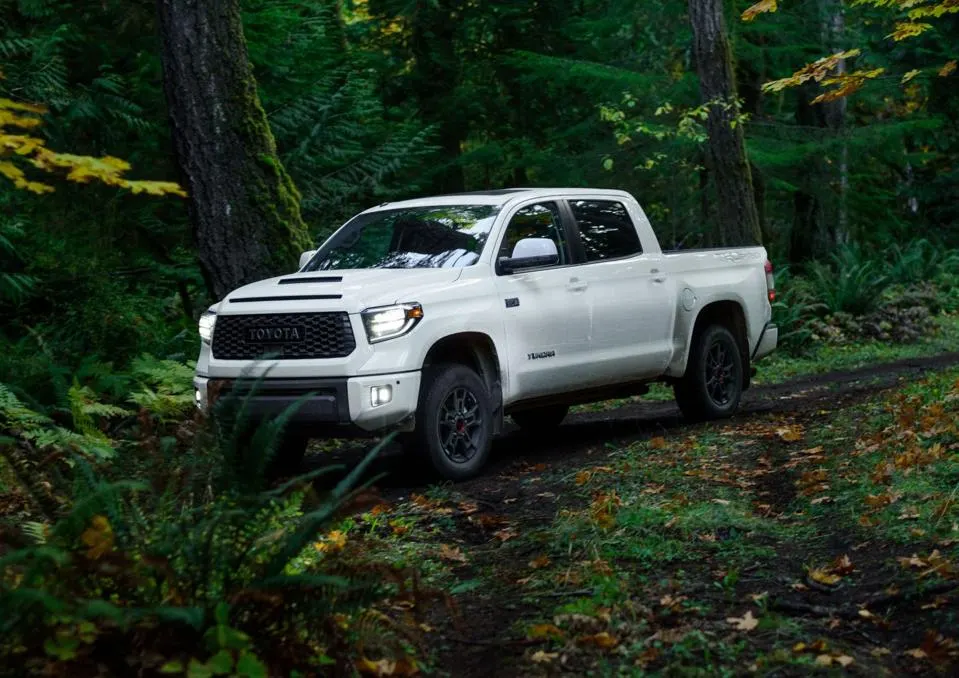
The Tundra’s technological problems extend beyond simple screen freezing to include comprehensive system crashes that affect multiple vehicle functions simultaneously.
Owners report instances where the entire infotainment system becomes unresponsive, requiring battery disconnection to reset functionality.
This level of technological instability is particularly problematic in a work truck, where reliable operation is essential for professional use and where downtime for technical issues can affect productivity and income.
Software updates intended to address these issues have provided only temporary relief, with many owners reporting that problems return within weeks of dealer service visits.
The frequency of required technical service bulletins and software patches indicates fundamental design or integration problems rather than minor bugs that can be easily resolved.
Professional automotive technicians report spending significant time troubleshooting Tundra infotainment problems, often requiring multiple diagnostic sessions to identify and temporarily resolve recurring issues.
The technological unreliability has significantly impacted the Tundra’s reputation among truck buyers who typically prioritize dependability above all other features.
Many owners express frustration that a vehicle designed for rugged use cannot reliably manage basic electronic functions, undermining confidence in the truck’s reliability.
This situation has forced Toyota to extend warranties on certain electronic components and provide loaner vehicles while dealers attempt to resolve persistent technological problems, highlighting the severity of these issues.
2. Toyota bZ4X (2022-2024)
Toyota’s first dedicated electric vehicle, the bZ4X, has struggled significantly with technological integration, experiencing frequent system crashes and infotainment failures that have undermined confidence in Toyota’s electric vehicle capabilities.
The vehicle’s advanced technological features, designed to differentiate it from conventional vehicles, have instead become sources of persistent frustration for owners who expected Toyota’s traditional reliability in an electric package.
The bZ4X’s infotainment system exhibits particularly problematic behavior during charging sessions, frequently freezing or becoming unresponsive when connected to DC fast charging stations.
This timing is especially problematic because drivers need access to charging status information and climate control during extended charging stops.
The system’s inability to maintain stable operation during critical use scenarios has forced many owners to rely on smartphone apps for charging management, defeating the purpose of integrated vehicle technology.
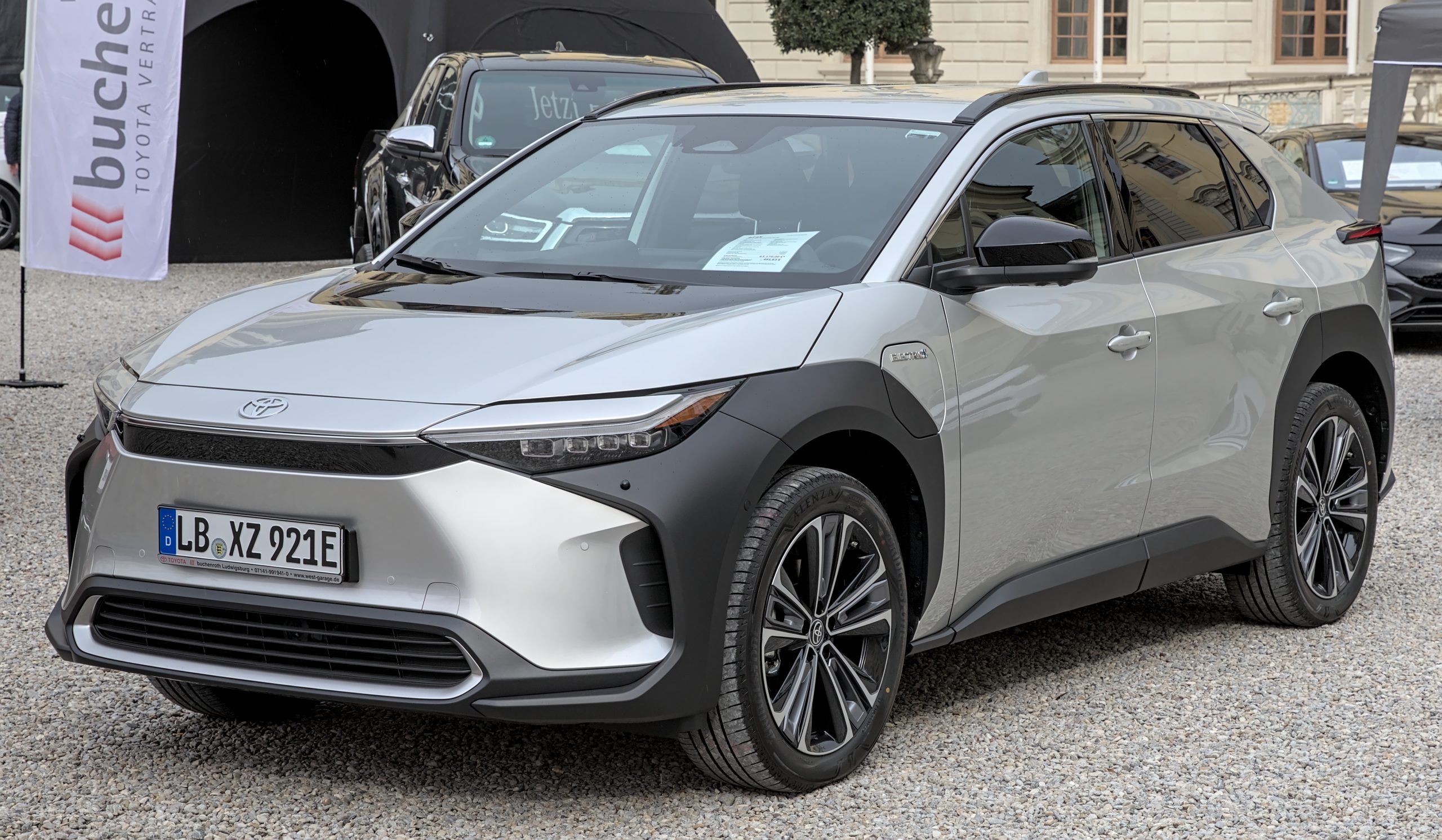
Climate control integration in the bZ4X has proven unreliable, with the system frequently failing to respond to temperature adjustments or fan speed changes.
This problem is amplified in an electric vehicle where climate control directly affects driving range, making system failures more than comfort issues.
Owners report instances where the climate control system becomes completely unresponsive, requiring complete vehicle shutdown and restart to regain functionality, a process that consumes valuable battery power and causes significant inconvenience.
The vehicle’s advanced driver assistance features, marketed as cutting-edge technology, frequently malfunction or provide inconsistent performance.
The lane-keeping assist system exhibits erratic behavior, sometimes providing too much correction and other times failing to respond to lane departures.
These inconsistencies create driver confusion and reduce confidence in the vehicle’s safety systems, particularly problematic in a vehicle that depends heavily on technological integration for basic functionality.
Software update procedures for the bZ4X have themselves proven problematic, with some owners reporting that update attempts fail midway through the process, leaving the vehicle in a partially updated state that requires dealer intervention to resolve.
The frequency of required updates, combined with their unreliable installation process, suggests fundamental software architecture problems that cannot be easily resolved through traditional automotive service approaches.
This technological instability has significantly impacted early adopter confidence and has required Toyota to implement extended warranty coverage for electronic systems.
3. Toyota Venza (2021-2024)
The Toyota Venza, despite its premium positioning and sophisticated technology, has developed a troubling reputation for infotainment system instability that frequently leaves drivers without access to essential vehicle functions.
Owners report that the infotainment screen freezes shortly after startup, particularly when starting with built-in navigation maps displayed, creating immediate frustration during daily commutes when reliable technology is most crucial.
The Venza’s technological problems manifest in multiple ways, from complete system freezes that render the touchscreen completely unresponsive to partial failures where certain functions work while others remain inaccessible.
Climate control integration is particularly problematic, with owners reporting instances where temperature and fan controls become unresponsive through the touchscreen interface, forcing reliance on physical backup controls that may not provide full functionality access.
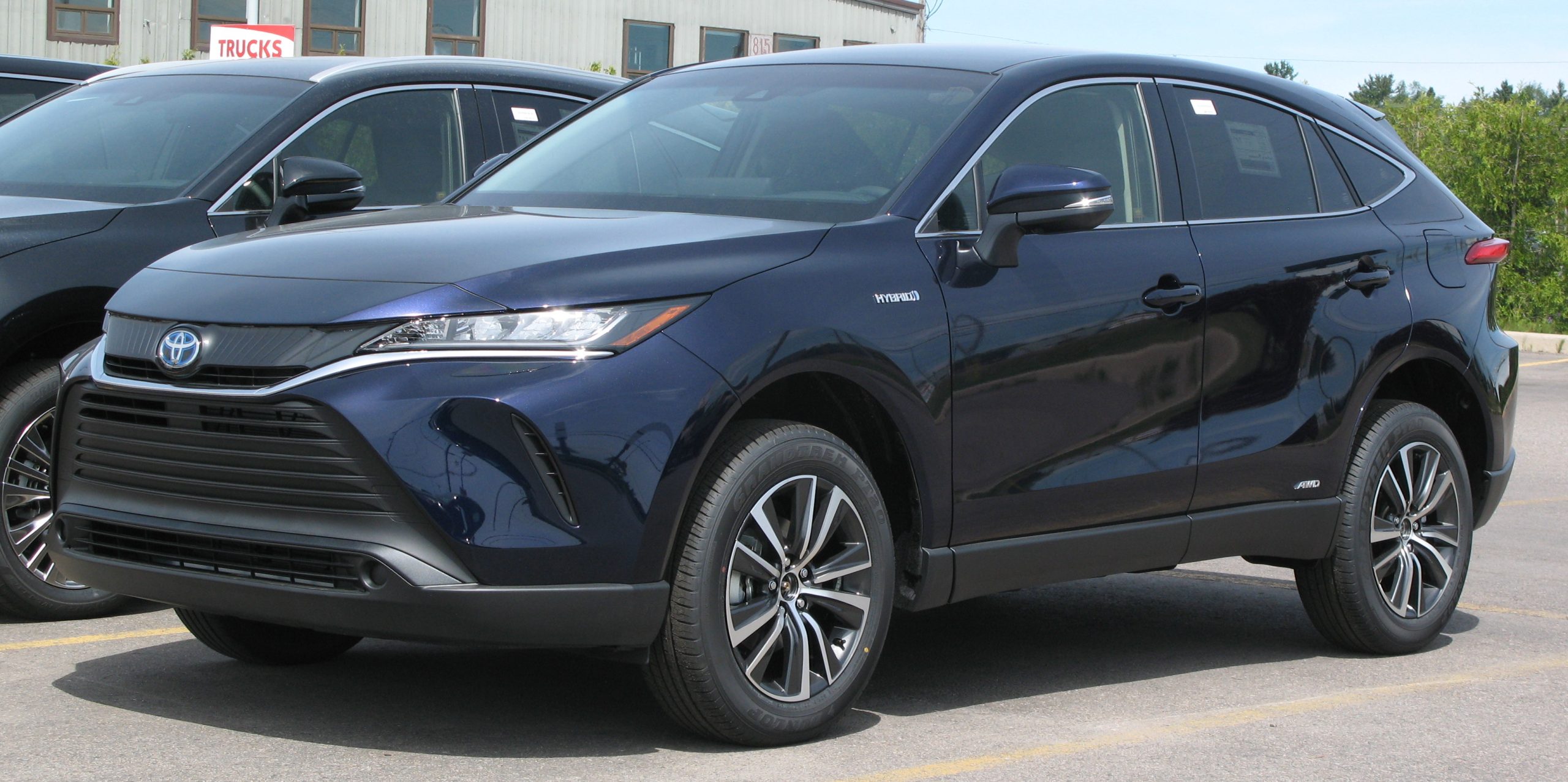
Audio system integration in the Venza exhibits chronic instability, with Bluetooth connections frequently dropping or failing to establish properly.
Owners report that the premium JBL audio system, a key selling point for the vehicle, often fails to produce sound even when the infotainment display indicates that music is playing.
These audio failures sometimes resolve themselves after extended driving periods, but more often require complete system resets that interrupt driving concentration and passenger entertainment.
Navigation system functionality in the Venza has proven particularly unreliable, with GPS positioning frequently becoming inaccurate or completely failing during critical navigation needs.
The system sometimes displays incorrect locations or fails to update route information, creating potential safety hazards when drivers depend on the navigation system for unfamiliar routes.
These navigation failures often coincide with system instability, suggesting underlying integration problems that affect multiple vehicle systems simultaneously.
The frequency of required dealer visits for Venza technological issues has become a significant ownership concern, with many owners reporting multiple service appointments to address recurring infotainment problems.
Dealer technicians often struggle to reproduce intermittent failures, leading to unsuccessful repair attempts and owner frustration.
The persistence of these problems across multiple model years suggests systematic issues with the vehicle’s electronic architecture rather than isolated manufacturing defects that can be easily corrected through service procedures.
4. Toyota Sequoia (2023-2024)
The completely redesigned Toyota Sequoia has unfortunately inherited many of the technological problems that plague the related Tundra platform, experiencing frequent infotainment system crashes and display failures that significantly impact the user experience in this premium full-size SUV.
The vehicle’s large touchscreen display, while impressive when functioning properly, has proven remarkably unreliable, often freezing during critical operations or failing to boot properly after vehicle startup.
Climate control problems in the Sequoia are particularly problematic given the vehicle’s large interior space and multiple climate zones.
The system frequently fails to respond to temperature adjustments or zone-specific settings, leaving passengers uncomfortable and drivers frustrated with unresponsive controls.
These climate control failures often occur in conjunction with infotainment system crashes, indicating integration problems between essential vehicle systems that should operate independently.
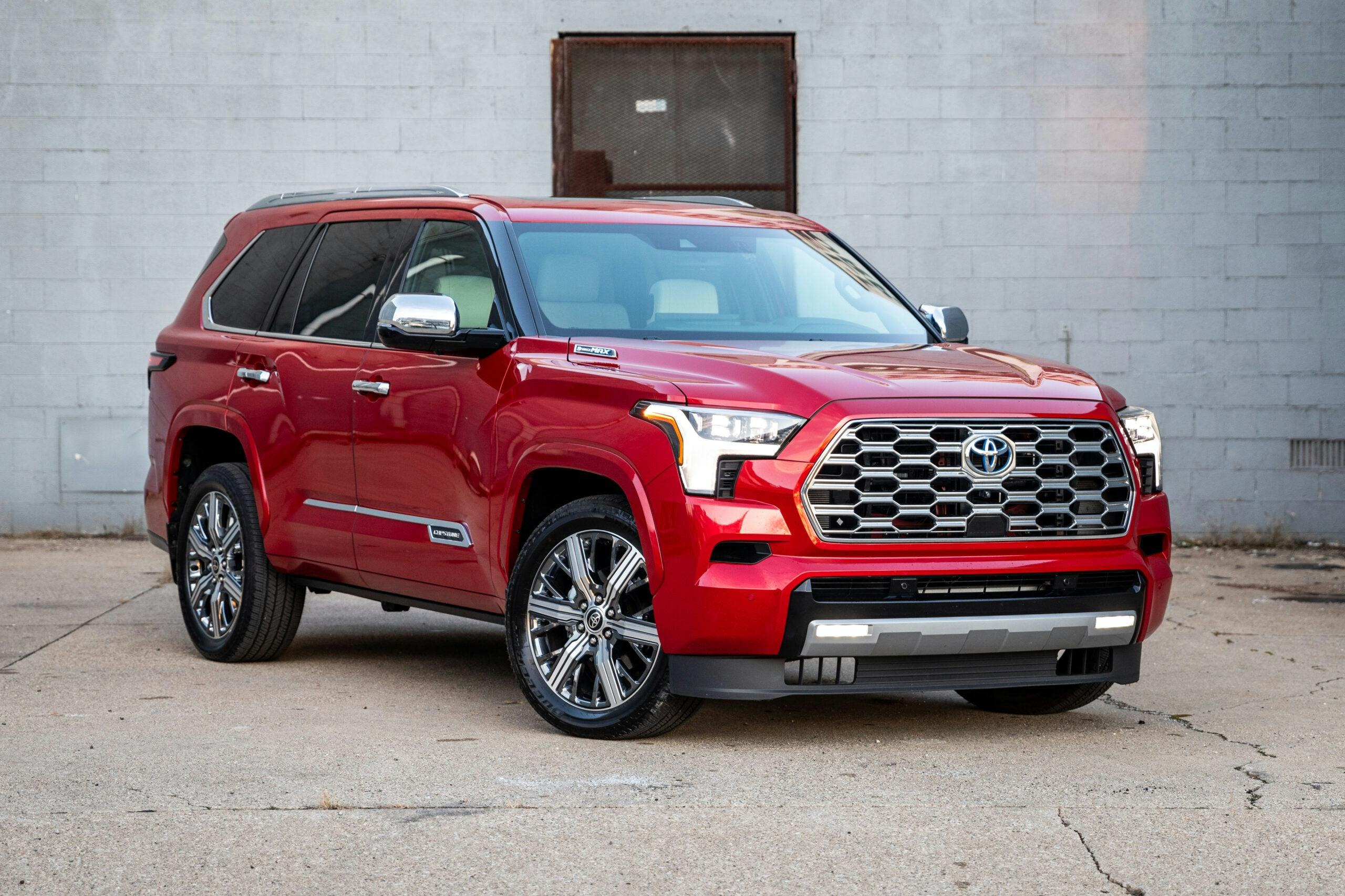
The Sequoia’s advanced towing features, a critical capability for this class of vehicle, are frequently compromised by technological failures.
The integrated trailer brake controller, towing mode selections, and trailer-specific display information often become inaccessible when the infotainment system experiences problems.
This technological unreliability undermines the vehicle’s core mission as a capable towing platform, forcing owners to rely on aftermarket solutions or avoid towing activities entirely.
Audio system performance in the Sequoia exhibits chronic problems, with the premium sound system frequently producing distorted audio or failing to produce sound altogether.
These audio failures sometimes affect only specific speakers or channels, creating unbalanced sound reproduction that cannot be corrected through system settings.
The integration between smartphone devices and the vehicle’s audio system proves particularly problematic, with connections frequently dropping or failing to establish properly.
Software update procedures for the Sequoia have themselves become sources of owner frustration, with updates frequently failing to install properly or creating new problems while attempting to resolve existing issues.
Dealers report spending significant time attempting to update Sequoia infotainment software, often requiring multiple attempts or specialized diagnostic equipment to complete successful installations.
This update unreliability suggests fundamental software architecture problems that extend beyond simple bug fixes to underlying system design issues.
5. Toyota Corolla Cross (2022-2024)
The Toyota Corolla Cross, despite its positioning as an affordable and reliable compact SUV, has experienced significant technological problems that belie its intended simplicity and dependability.
Owners report frozen radio systems that get stuck on the Toyota logo during reboot attempts, sometimes loading only partially before freezing again, creating persistent problems that affect daily usability and owner satisfaction with this entry-level SUV.
The vehicle’s infotainment system, while simpler than those found in more expensive Toyota models, proves surprisingly unstable, frequently requiring system resets to maintain basic functionality.
The center infotainment screen periodically blacks out for no apparent reason, sometimes continuing to play radio while displaying no visual information, creating confusion and safety concerns when drivers need to access important vehicle information or navigation assistance.
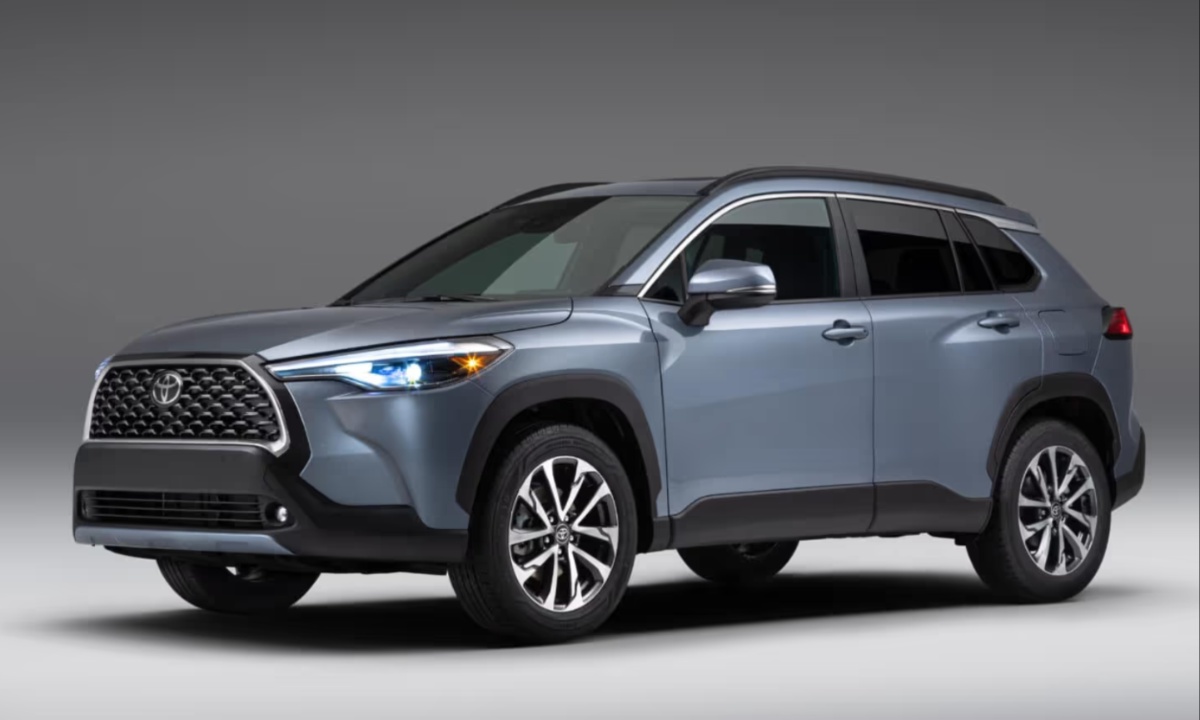
Smartphone integration in the Corolla Cross has proven particularly problematic, with Apple CarPlay and Android Auto connections frequently failing to establish or maintain stable operation.
These connectivity problems force drivers to rely on their phones directly for navigation and communication, defeating the purpose of integrated vehicle technology and creating potential safety hazards when drivers must manipulate handheld devices while driving.
Climate control integration exhibits chronic problems, with the system frequently failing to respond to temperature or fan speed adjustments made through the touchscreen interface.
While physical backup controls provide some functionality, the integration problems often affect automatic climate control operation, forcing drivers to manually manage comfort settings that should adjust automatically based on interior and exterior conditions.
The frequency of technological problems in the Corolla Cross is particularly disappointing given the vehicle’s positioning as an affordable, reliable option for budget-conscious buyers.
Many owners purchased this SUV specifically to avoid the technological complexity and potential problems associated with more expensive vehicles, only to discover that even basic infotainment systems can prove unreliable when poorly implemented.
This situation has forced Toyota to extend warranty coverage for certain electronic components and has damaged the model’s reputation among value-conscious consumers who prioritize dependability above advanced features.
Also Read: 5 Mercedes Models That Rarely Have Recalls vs 5 That Constantly Do

